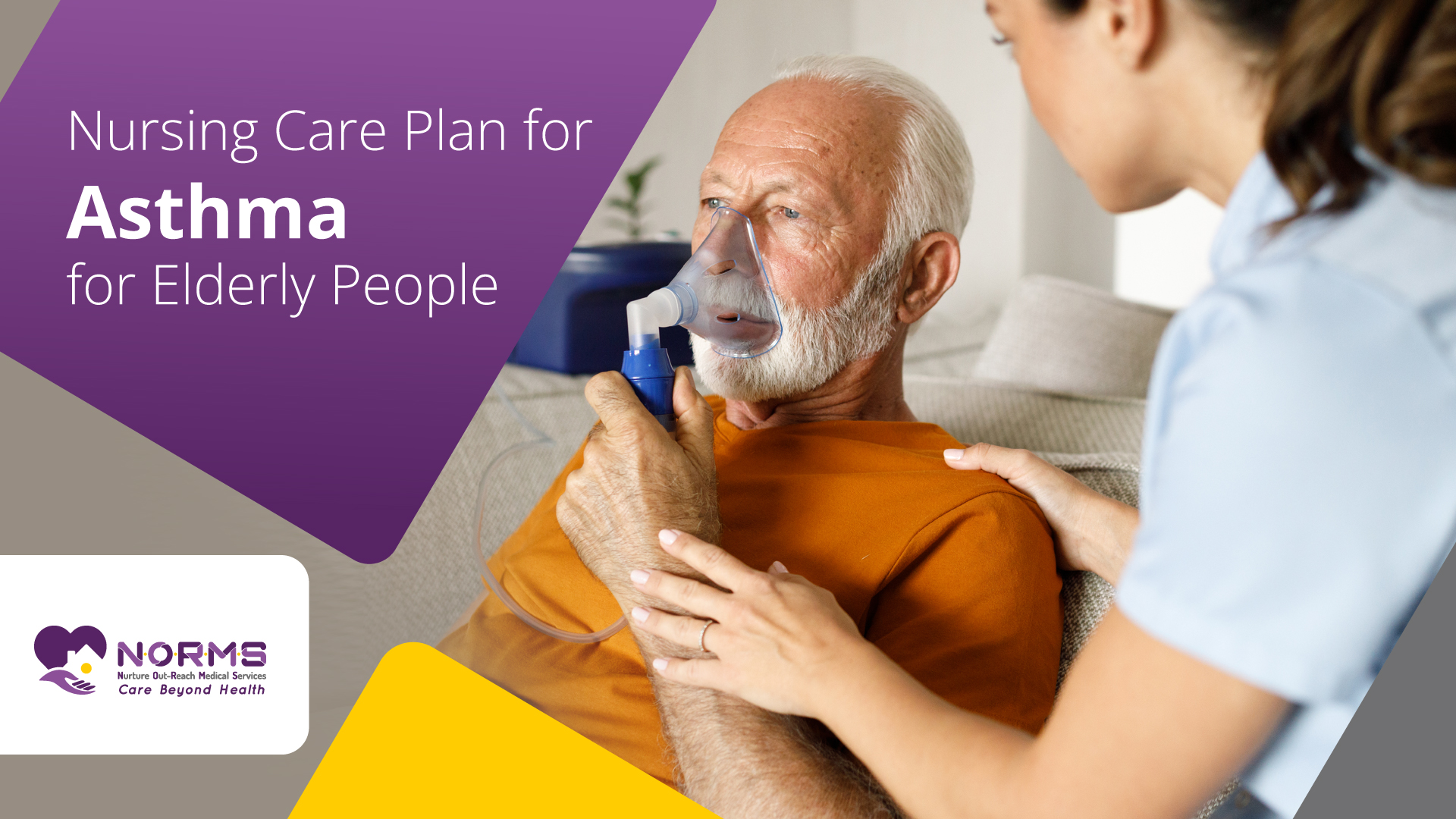
Introduction
Asthma as a disease that tends to affect younger individuals also carries specific obstacles regarding the elderly afflicted. Developing the nursing care plan for asthma in this population calls for a complex and sophisticated approach. Since asthma suffers from aging bodies as well as comorbidities, it requires a special management strategy considering the peculiarities of this patient group. The plan provides care for immediate respiratory symptom management, promotes wellness, enhances health quality and reduces asthma burden among the elders.
The asthma symptoms in aging patients may be different or similar to other symptoms of aging. Some common symptoms of asthma in aging individuals may include:
However, it is important to mention that older patients may experience unusual symptoms or downplay their breathlessness due to being age-related. Therefore, healthcare providers require an astute assessment so as to diagnose and manage asthma in this population appropriately.
These nursing diagnoses aim to capture the multifaceted nature of asthma in the aging population and guide healthcare professionals in tailoring care strategies to address these specific concerns.
Asthma in old-aged patients presents a particular care problem requiring an integrated care approach. Management of asthma in this population is critical, and key among them is the provision of nursing goals and interventions. This part describes essential nursing objectives and the corresponding interventions that target the intricacies of asthma in old patients, involving preventive and responsive patient care techniques.
Lung function needs regular assessment in an elderly patient for early and appropriate intervention to avert exacerbations.
Work with the healthcare team to develop an individual’s asthma action plans and respiratory disease management.
Promote physical activity within patient limitations to avoid deconditioning and preserving function.
Teach patients about breathing exercises that enhance stamina and mitigate asthma’s effect on everyday activities.
Give psychological support and counseling to cope with anxiety and stress caused by asthma aggravations in elderly patients.
Provide patient education on stress reduction and relaxations to help manage the emotional aspect of asthma.
Perform an in-depth evaluation of the patient’s surroundings, looking for fall hazards, to propose adjustments for safety purposes.
Provide counselling to patients about adaptive measures to avoid falling in distress due to asthma.
Comprehensive education on the proper medication use (i.e., inhaler technique), dosage adherence, and asthma control strategies must be provided.
Cooperate with the healthcare providers on how medications should be reviewed and revised according to the changing health status of the ageing patients.
Perform routine respiratory evaluations to identify possible triggers of respiratory worsening in old patients and examine changes in lung performance.
Teach patients and caregivers about asthma triggers, symptoms, and management including the need for early interventions.
Work with healthcare teams and the aged patients to develop individual asthma action plans directed towards specific symptoms and responses.
Physical exams and specialized exercises to be undertaken to maintain mobility and to avoid deconditioning, taking into account the limitations due to asthma.
Counseling and guidance on stress management techniques for relief of emotional distress in older people during asthma.
Review the patient’s home environment for fall hazards, and suggest modifications to enhance safety.
The nurses should provide in-depth education about using the medication, including how to use the inhaler and dosage schedule, for proper medication compliance and efficacy.
Managing asthma for elderly patients requires an integrated focus on respiratory issues and emotional, physical and safety concerns. By setting specialised nursing targets and applying suitable intervention measures, nurses may significantly improve the level of care and existence of elderly patients who suffer from asthma.
Asthma care needs a tailored approach for the elderly. However, in the elderly, asthma is not typical. It does not stop there; it deals with ageing and the associated health problems and complications associated with ageing bodies. The focus is on developing interventions in areas of respiratory health, emotional support, and safety measures to help the patients manage asthma and lead a healthy life free from the disease.
Asthma in the elderly is less prevalent but often underdiagnosed due to atypical symptoms.
Diagnosis involves spirometry tests, considering symptoms and ruling out similar conditions like COPD.
Medication management, patient education, and trigger identification are crucial for managing asthma in the elderly.
Atypical symptoms and overlapping health issues make diagnosis and management complex in older asthma patients.